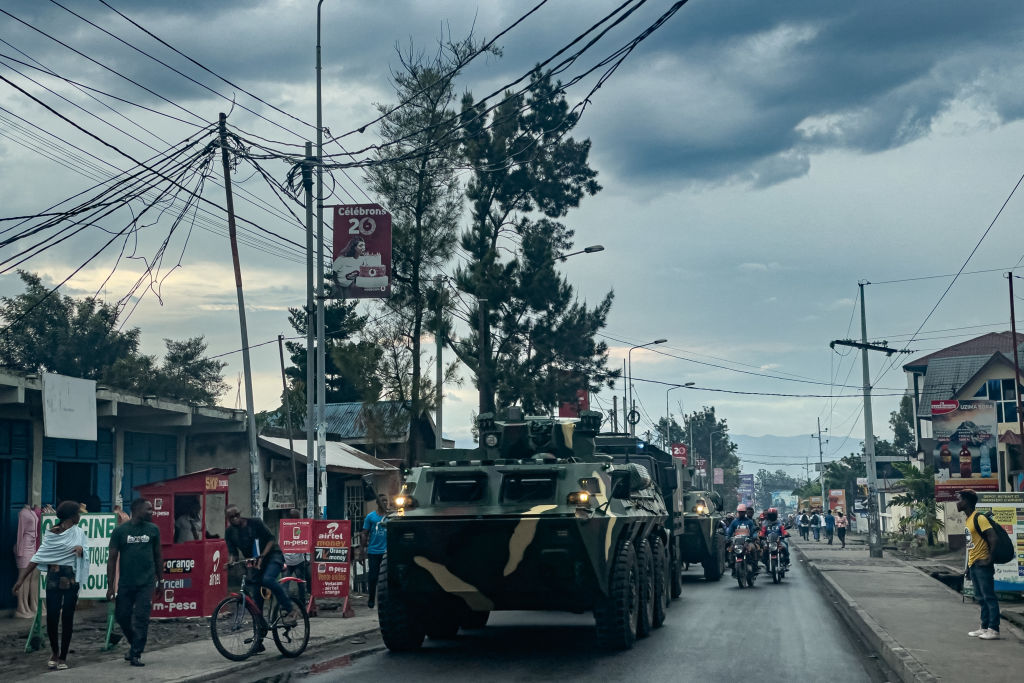The runway at Goma International Airport in the Democratic Republic of the Congo is still littered with abandoned military vehicles and equipment. The control tower, like the airport itself, remains inoperable months after M23 rebels backed by Rwanda’s military took the city by overwhelming force in January.
Today, the battered airport stands as more than a symbol of the failure of the Southern African Development Community (SADC) mission to the embattled eastern DRC. It also is the very reason why 4,000 SADC troops are trapped in M23-controlled territory.
SADC leaders on March 13 terminated the mission, known as SAMIDRC, and announced a phased withdrawal. On March 28, the SADC signed an agreement with M23 that would allow for the withdrawal of all troops, weapons and equipment after the SADC helped to rehabilitate the airport.
“I think it is astonishing that after being hammered and targeted by the M23 and Rwanda, and taking serious casualties, after being essentially humiliated by the M23 and Rwanda, after being threatened ever since they deployed, the SANDF (South African National Defence Force) is now bending over backwards and agreeing to pay to redo the airport,” Stephanie Wolters of the Johannesburg-based South African Institute of International Affairs told South African newspaper The Daily Maverick.
“To me, that can only be because the M23 is refusing to do it, and so SADC and (South Africa) have no choice if they want their troops out. It demonstrates just what a fiasco this is.”
Wolters is among the many African security experts who believe the demise of the mission reveals deeper issues with SADC’s limited military capacity, regional political dynamics and a lack of resources and commitment by the Congolese military (FARDC).
“As the M23 advanced on SAMIDRC headquarters and towards Goma, many FARDC soldiers simply fled,” she wrote in an opinion piece for The Daily Maverick on March 18. “SADC and South Africa, who have been on the ground for 13 years, should have been aware of the significant challenges involved in working with the Congolese army. South African defense analysts had already started warning that the SANDF could not support such a deployment and that the lack of training, preparedness and equipment was putting South African Soldiers in harm’s way.”
Paul-Simon Handy of the Pretoria-based Institute for Security Studies, said the SADC’s mission wasn’t anchored in a political process and suffered from “strategic ambiguity.”
“Despite being framed by South African officials and the SADC Secretariat as a peacekeeping mission, SAMIDRC didn’t meet the standard definition of peacekeeping,” Handy wrote in a March 20 article for the institute. “Its mandate was focused on counter-insurgency, aimed at ‘assisting the DRC government in restoring peace and security in the eastern region.’ That amounts to a combat mission rather than a peacekeeping operation.
“In pushing for SAMIDRC’s deployment, South Africa appeared primarily motivated by economic factors and a desire to preserve its regional prestige, despite lacking the required military capabilities.”
With the bloc’s failure in the DRC coupled with the premature exit of a similar regional counter-insurgency force in Mozambique, Handy questioned the viability of SADC’s Mutual Defence Pact, which requires the body to come to the defense of a member state if it is attacked.
“As important as the DRC may be, it isn’t a key interest for South Africa,” he wrote. “In contrast, Uganda and Rwanda consider the eastern DRC vital due to their geographical proximity, security concerns and economic stakes.”
Darren Olivier, director at the African Defence Review website, said that in the end, SAMIDRC was an under-resourced, underequipped, poorly positioned force that was deployed by the SADC without a plan B.
“Once this is over, serious questions still need to be asked about the decision-making process,” he told South African security news site defenceWeb. “Reform is needed.”

